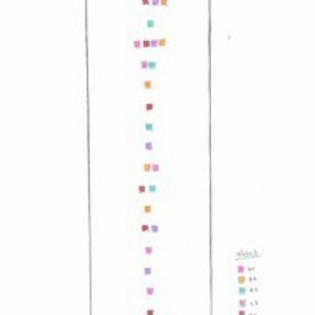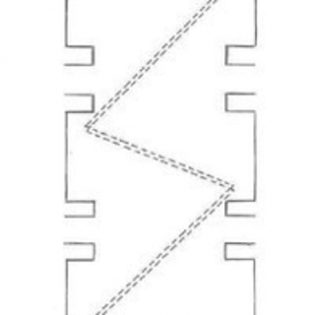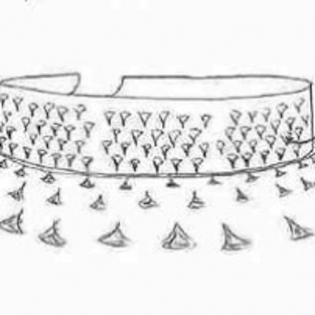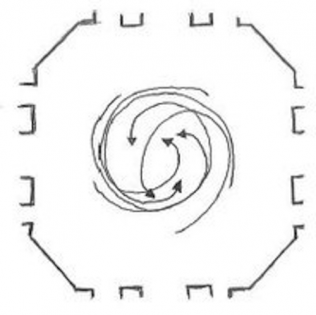by Helen Davison (Assistant Curator, Early Years and Families)
The acts of listening and hearing are important focuses in contemporary art practice, and as technology has advanced, artists have been able to utilise recording equipment and audio devices in order to explore sound as an artwork.
The aim of the Sonic Trails is to provide a context for sound art, which opens up a dialogue about sound as a medium in art practice and provides an experience of sound art which does not require specialist knowledge, letting children and families explore the work in their own time, so that they can make the decision when, where and how long they wish to interact with the work.
Sonic Trails are commissioned to explore themes in or connections to artworks within Tate’s Collection, highlighting the physicality of the galleries and the way sound behaves within the spaces, or to provide a playful experience completely at odds with a normal gallery visit.
By providing tangible links, we aim to help listeners discover that the concepts and themes they recognise within visual art and their everyday experiences are also evident and manifest in sound art practice, and that sound art can be something everyone can enjoy, without being elitist or intimidating.
Five Sonic Trails have been developed for Tate Modern by the Early Years and Families team in collaboration with sound artist Dan Scott, and the programme has recently launched at Tate Britain. Read more about Tate Britain’s first Sonic Trail for families. Read on to find out more about Tate Britain’s first Sonic Trail for families...
Invisible Chorus by The REC
Invisible Chorus explores the acoustics of Tate Britain and was performed and recorded live with members of The REC choir. Using graphic scores, the group improvised in response to the spaces that surrounded them. The Sonic Trail acts as a trace of that performance, alluding to how it would sound in the space, but not entirely able to capture it. In doing so, the trail relates to the documentation of performance works, which often become the artwork, rather than just a record of a performance.
The tracks made within the North and South Duveen galleries were performed from graphic scores which directed a game between the person capturing the performance on a recording device, and the choir.
The score for the South Duveen gallery consisted of a map with a set of coloured markers laid out in the space, with each coloured marker relating to a note in a chord. As the person recording the performance moved through the space over and past the markers, individual, pairs and groups of singers built and deconstructed the chord in a specific pattern.

The score for the North Duveen gallery reveals a passage of notes, with members of the choir located in different alcoves passing a single note from one end of the space to the other. The recording device moved with the notes as they travelled up and down the Duveens, as if it was carrying them along through space.

The improvised piece in the Rotunda used a phenomenon of the new architecture of Tate Britain to create the work. Within the wall, around the top of the spiral staircase there are recesses covered in plexi-glass which when tapped emit notes of different pitches, functioning a bit like a giant glockenspiel. The person recording moved in a circle under the stairs, up the staircase and in another circle around the wall at the top, exploring the changes in acoustics in the different locations.
In the Octagon, the choir stood in a circle mirroring the shape of the space, taking it in turns to improvise a phrase which complements and builds on the last one. In this instance the movement came only from the vocals in the choir, with the recording device stationary at one edge of the space.


The simplicity of Invisible Chorus aims to highlight the vastness and uniqueness of the Tate Britain spaces, exploring the length of echoes, responding to the time it takes someone to complete the journey through a space and hearing the changes in acoustics. It also alludes to the church-like quality of galleries, the contemplative and reflective interaction visitors often have with artworks, and the idea of making a pilgrimage to works that hold a personal resonance for the viewer.
Listen to Invisible Chorus, the latest Sonic Trail here:
https://soundcloud.com/sonictrails/sets/invisible-chorus
Related links:
http://www.tate.org.uk/whats-on/tate-britain/daily-activities/invisible-chorus-rec
http://www.tate.org.uk/whats-on/tate-modern/eventseries/listen-sonic-trails-children-and-families


No comments added